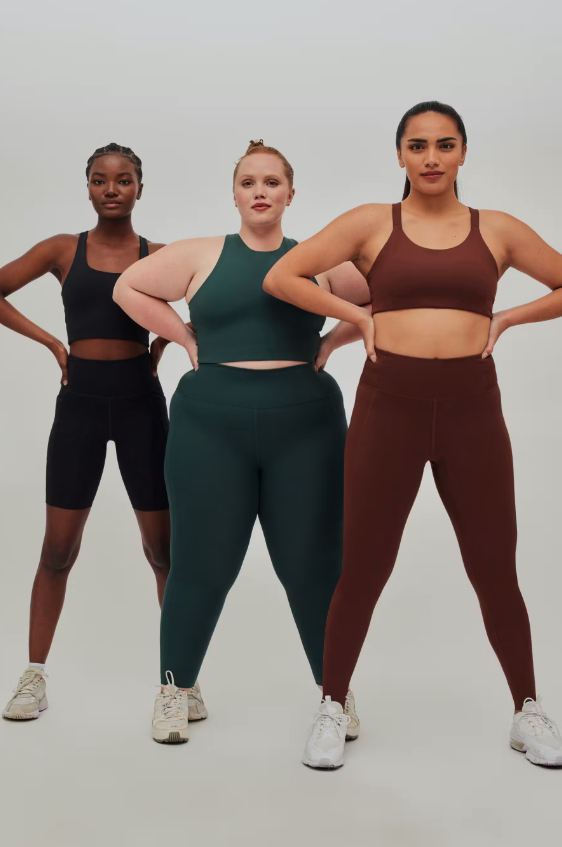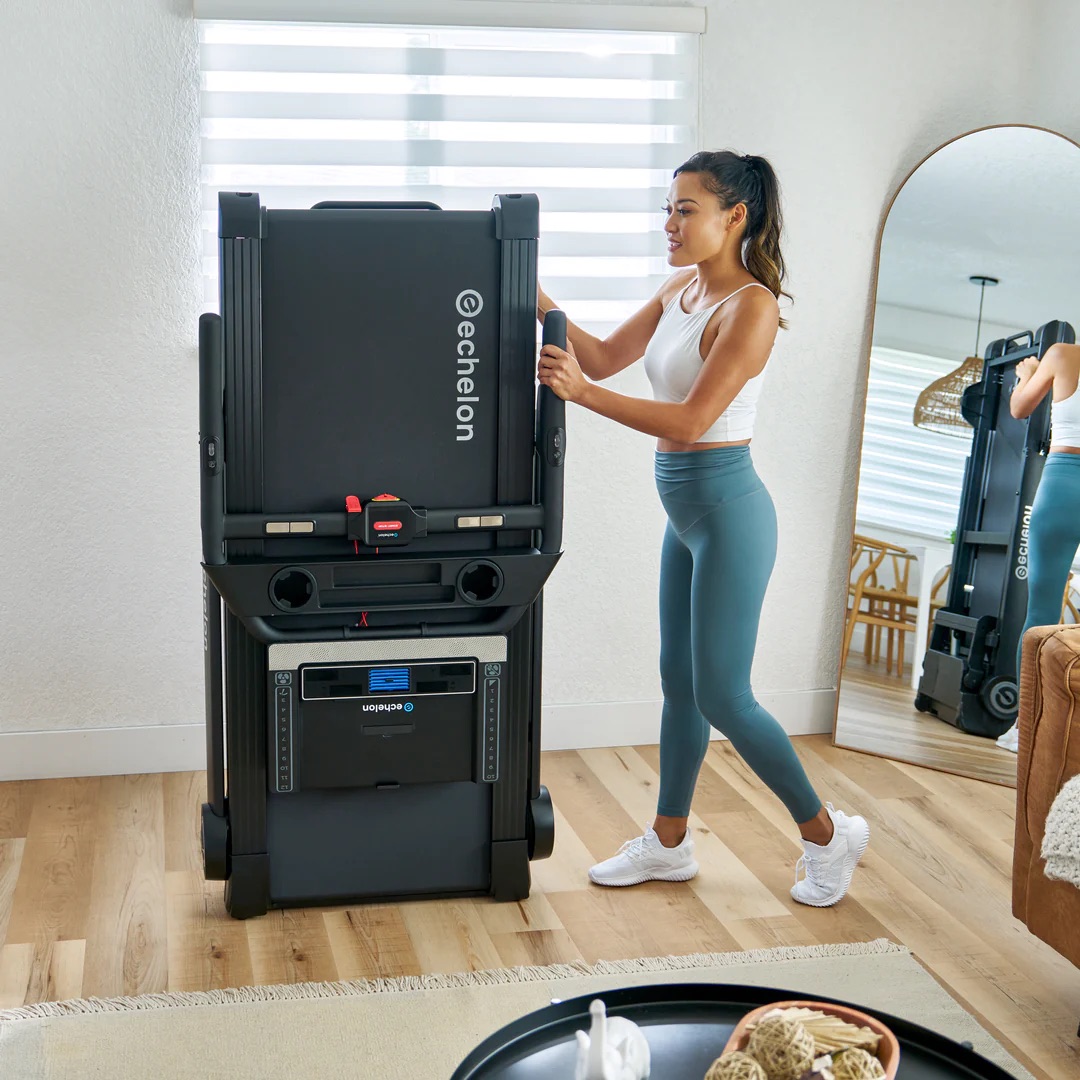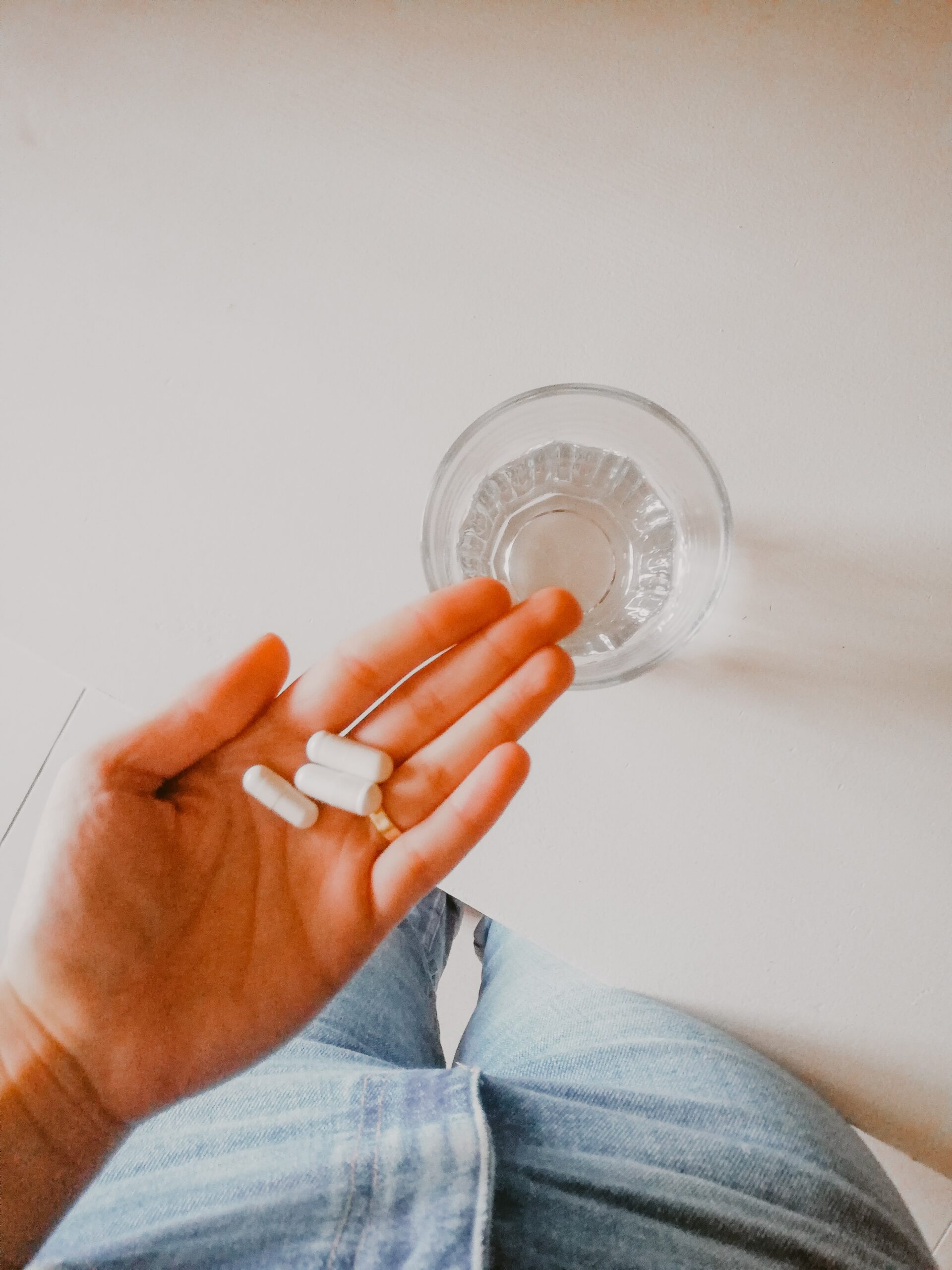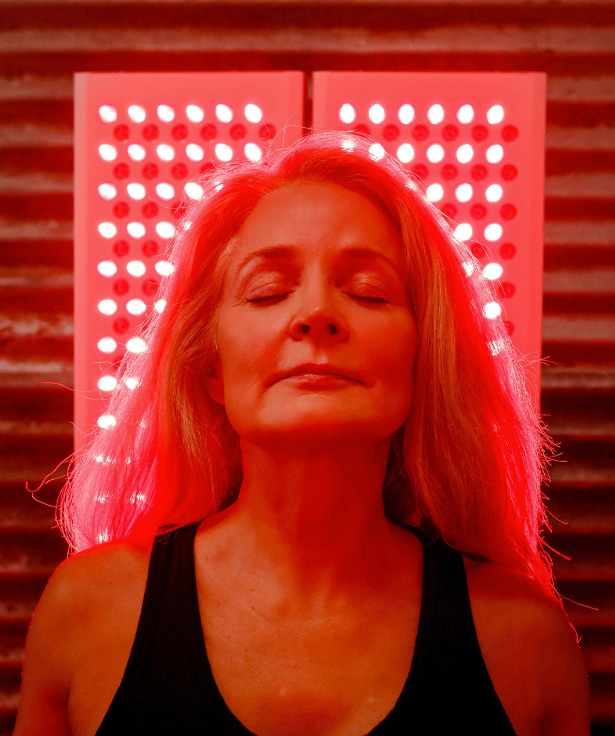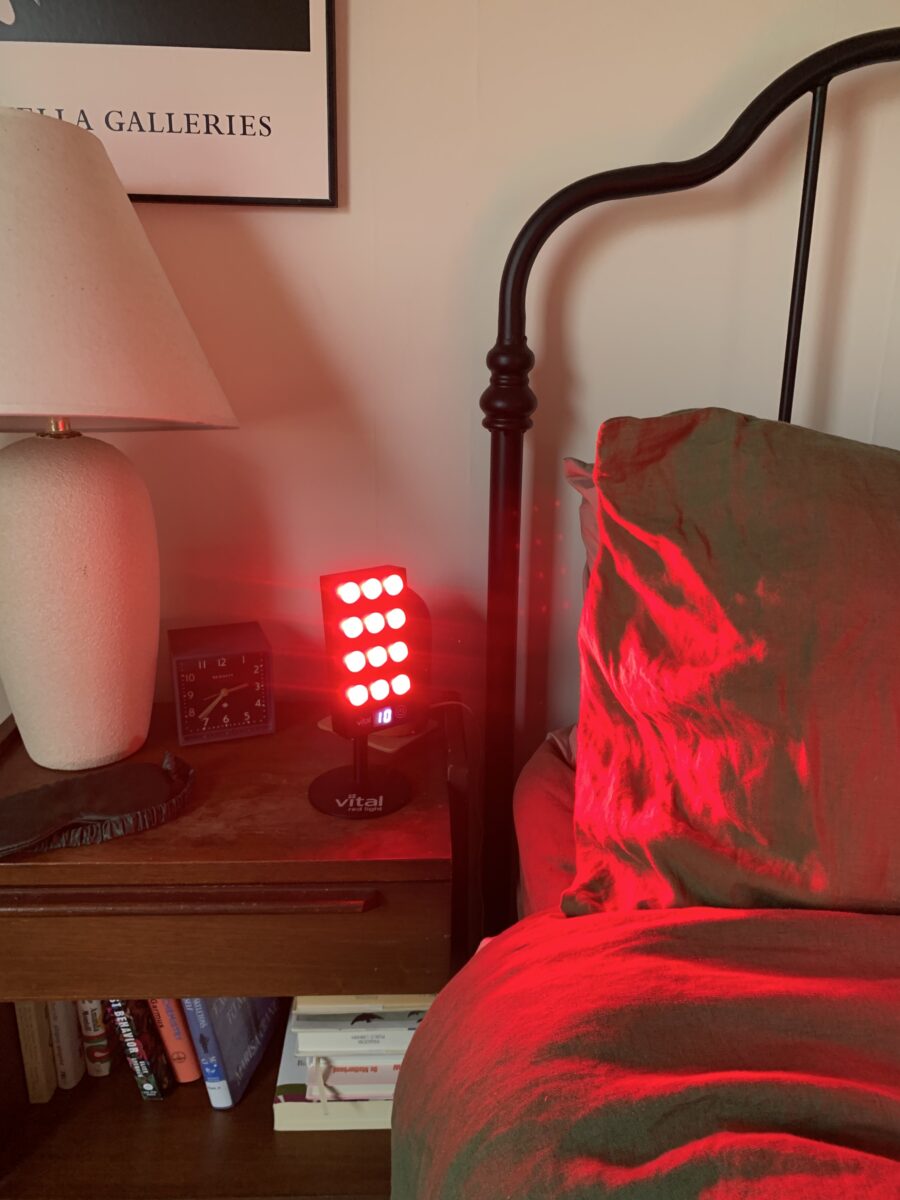
The Benefits Of Red Light Therapy Devices — A Vital Red Light Review
The Good Trade editors endorse products we’ve personally researched, tested, and genuinely love. Learn more about our methodology and business model here.
If you follow wellness news, you’ve likely heard the buzz about red light therapy from influencers on social media, Hollywood celebs, and popular health podcasts. Since I was a tanning booth girl in high school, the idea of exposing myself to artificial lights again hasn’t been on my list of new bandwagons. Then a friend let me borrow a red light mat to strengthen my immunity this past winter, and I loved it. So I decided to look into the science a bit further.
Red light therapy, sometimes called photobiomodulation, simulates sunlight through red and near-infrared bulbs. The technology was developed by NASA in the ‘80s for driving photosynthesis in plants, and it similarly works on humans by shining light particles (photons) onto your skin. Once your body absorbs these photons, it converts them into energy, encouraging your cells to regenerate and heal. The light also penetrates tissue and muscles to aid recovery, reduce inflammation, and more.
Red light therapy stimulates “the production of collagen, which can help improve the appearance of fine lines and wrinkles, and reduce inflammation, which can help ease muscle and joint pain,” writes Space B.A.R. Wellness, a boutique recovery gym in Pasadena, California. The holistic wellness center has a red light room clients can book.
Red light also improves both mood and energy by activating the production of adenosine triphosphate (ATP) and endorphins, they explain on their website. Clinical studies have shown red light to reduce oxidative stress and improve cellular respiration, allowing the body to make and use ATP energy more efficiently.
Studies show red light improves both mood and energy and reduces oxidative stress.
While going to a wellness center to try red light sounded intriguing, I decided to try two at-home portable red light devices from Vital Red Light, a Santa Monica-based company: the Vital Charge and Vital Pro.
Vital Red Light uses medical-grade LEDs (the highest available on the market), and they are trusted by medical professionals to deliver safe at-home treatments—the brand is FDA and third-party independently tested. Starting at $399, the pricing is also more affordable than other leading brands, though any red light device is still quite the investment.
“We believe that everyone should be able to enjoy the full-body wellness benefits of red light therapy in the comfort of their own home,” says Vital Red Light Founder Jake Kreuz.
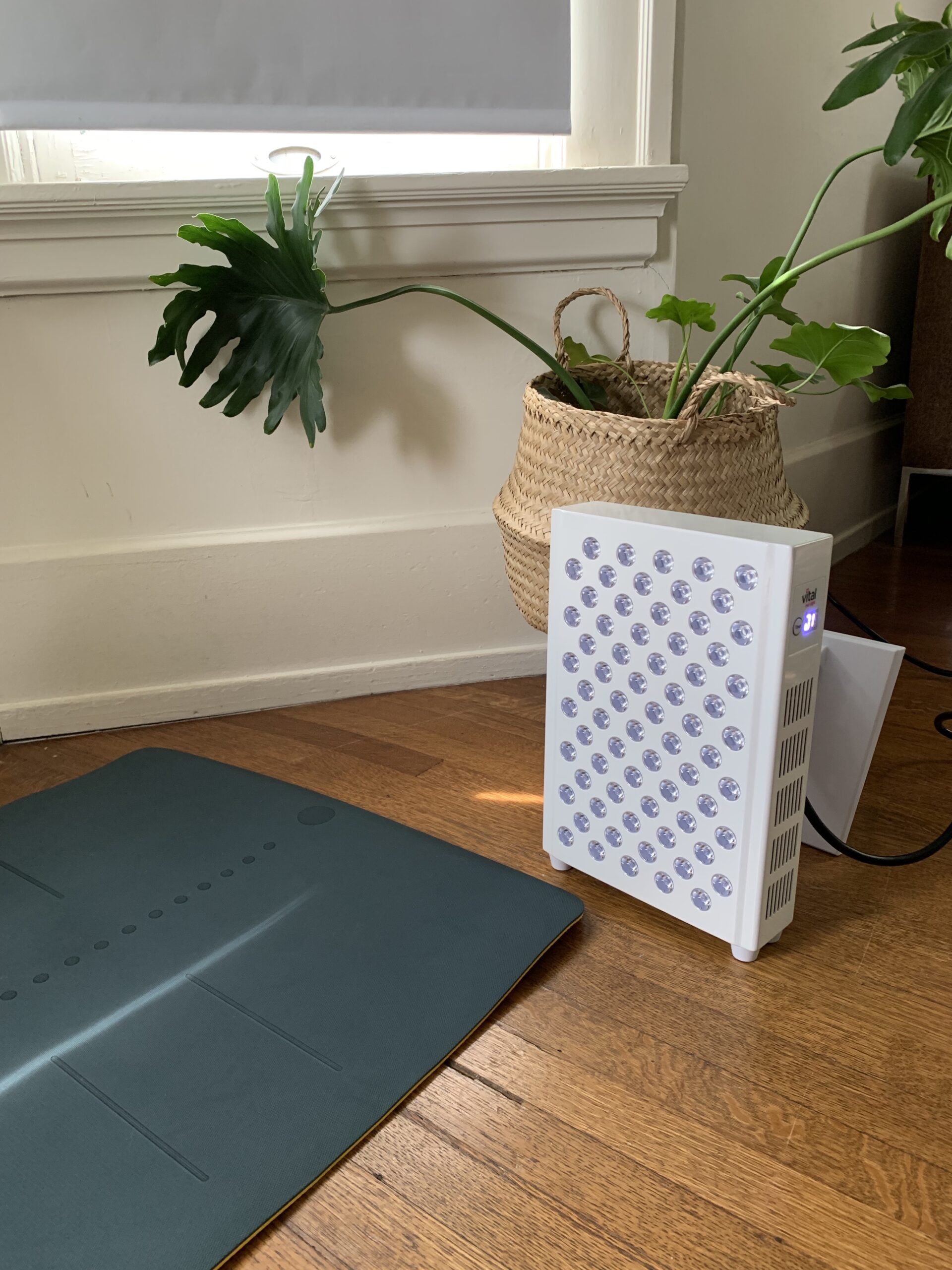
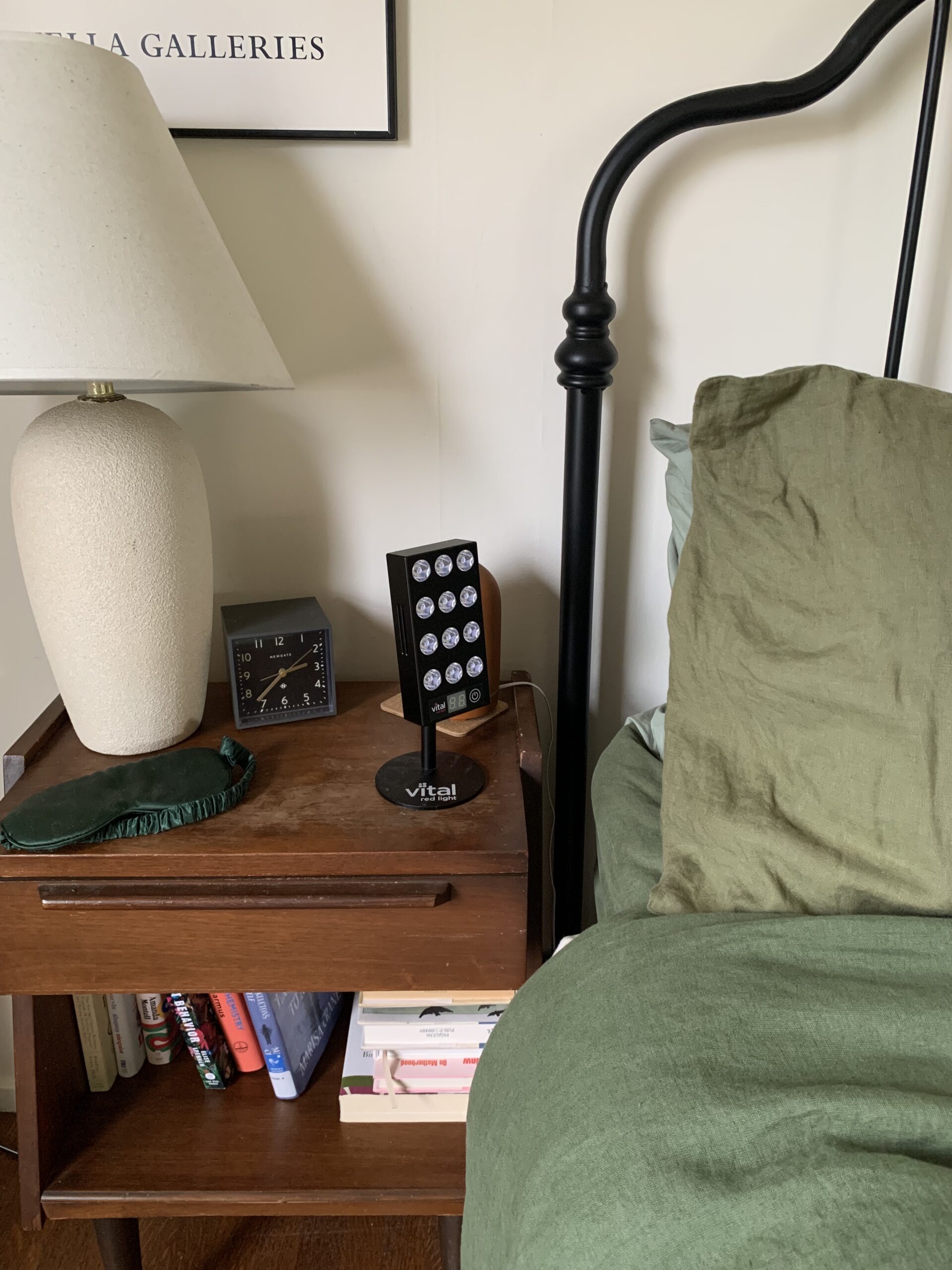
The devices arrived quickly—within five business days—and I appreciated the 25-page resource guide explaining the science behind red light therapy. “‘We’re committed to making it accessible and easy to understand for both experts and beginners alike through our science-backed, approachable products and education,” Kreuze tells me. The package also included eye protection.
According to the brand, “eye protection should be used when near-infrared mode is active…[and] you should not shine a red light device directly in your eyes.” While there is some evidence that light therapy can improve eye health, more research needs to be conducted. The American Academy of Ophthalmology says it is not an approved eye treatment.
The setup of each device was a breeze—I placed the Vital Charge on my nightstand and the Vital Pro at the base of my yoga mat. I began with testing the Vital Pro since it’s the larger of the two devices and has three light options: Red light, infrared light, and combo. It also has a 10-minute timer mode, though it will run continuously if you prefer.
For my first session, I stripped down to biker shorts and a sports bra—red light doesn’t penetrate through clothing, and many people will even use red light in the nude. I used the timer mode and turned on some music to unwind and stretch without thinking about the clock. Daily use is optimal, which you can start right away (there’s no ramp-up period), and Vital Red Light even recommends using devices two to three times a day for problematic areas. The brand also recommends 10 to 20-minute sessions at a time, with the device sitting six to 18 inches away from your body.
Daily use is optimal, which you can start right away (there’s no ramp-up period), and Vital Red Light even recommends using devices two to three times a day for problematic areas.
At first, it felt a bit funny since the device is only 12.5 inches tall and offers targeted treatments instead of full-body exposure. When I’d move into different yoga poses, I’d move out of the light; thus, it felt ineffective. The light isn’t thermal, either, which may seem surprising since the bulbs are red. I discovered, for this particular device, it was best to sit still and meditate in the light for it to do its work, with a space heater nearby to keep warm! The Vital Elite is best for full-body treatments if you want to stretch and do yoga.
I failed at using the device daily, but I did implement a few sessions into my routine throughout this past winter. The device has been excellent for transitioning from work into my evening, and I’ve found it gives me an energy boost and helps me to destress from the day. What has been most surprising, though, and what I didn’t expect, is that I have gravitated to the smaller of the two devices—the Vital Charge—for daily use. Another surprise? I use it to help me fall asleep.
I assumed I would find red light useful for waking up and recharging on winter days, but instead, my body loves this tiny device (at 5.75 inches tall and sits perfectly on my nightstand) to wind down and calm my nervous system before naps or at night. I love it so much that I even travel with it and use it on vacations.
According to Vital Red Light, research shows that red light can “improve sleep quality and duration, and help people produce more of their own melatonin—also known as the sleep hormone.” This has definitely been the case for me. I put the light on its timer, turn on my breathing app, and get the best sleep. It’s been a definite game-changer for this benefit alone.
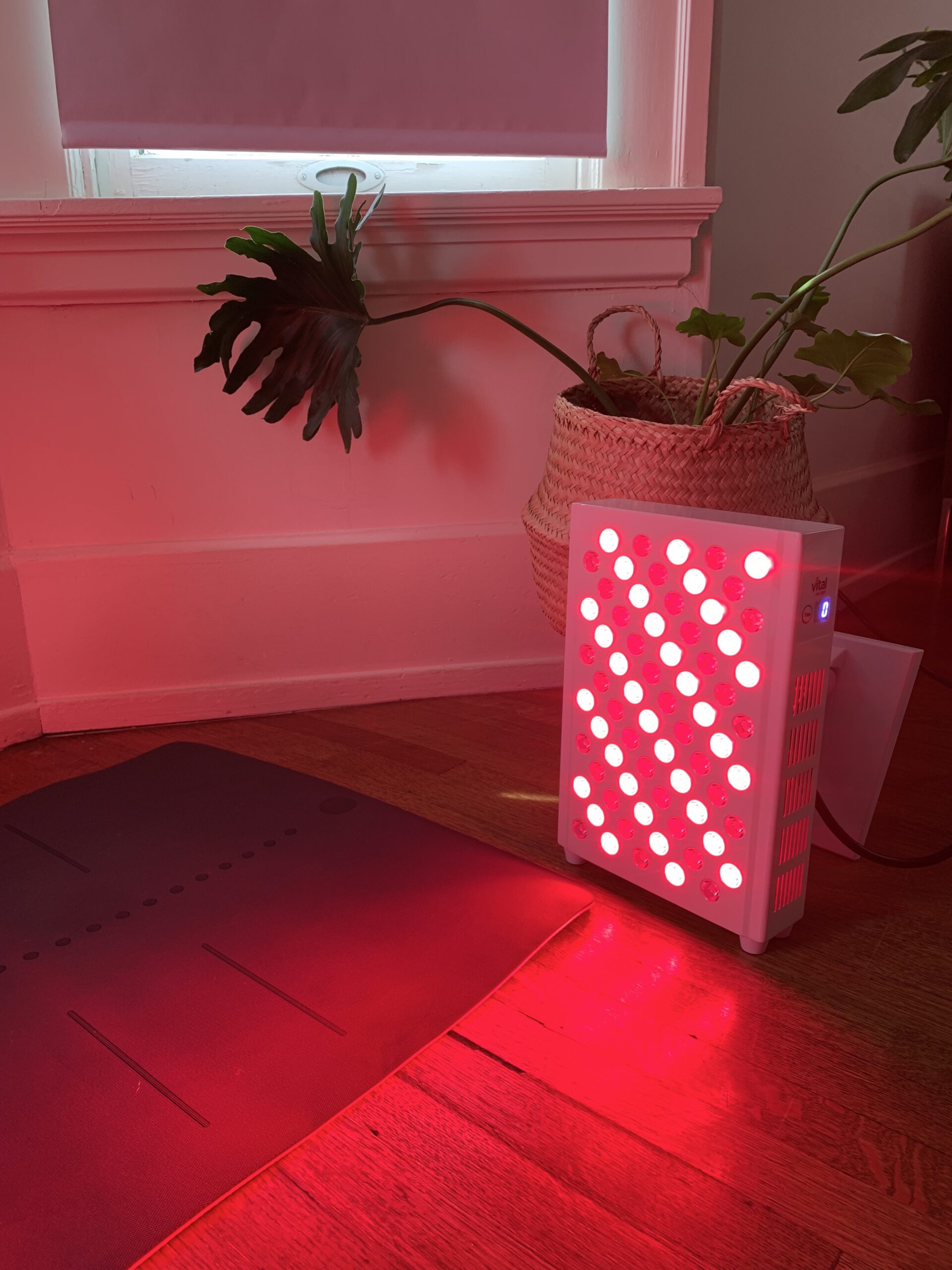
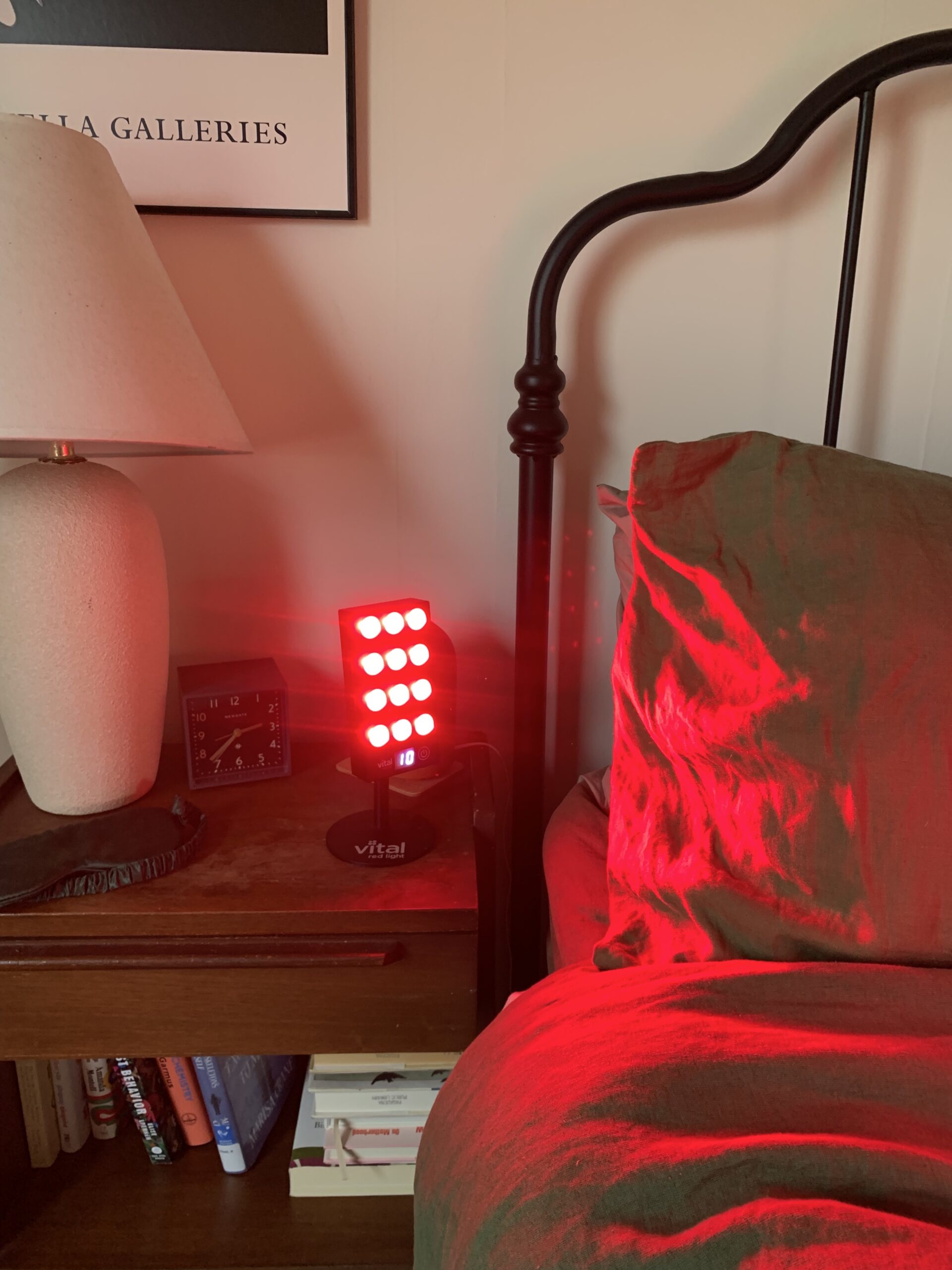
As to all of the other benefits? I’m not sure I’ve noticed a reduction in facial lines yet, though I feel like my skin has looked healthier this winter (perhaps because of the better sleep). I haven’t fallen sick yet, either (fingers crossed)—which I usually do in the first few months of the year—so maybe the red light has boosted my immunity. Either way, I’ll take it.
I plan to keep using red light devices as part of my regular wellness routine as we transition to spring and summer. I’ll be excited to see if I notice more benefits with more consistent use, and while I don’t think every trend is all it’s hyped up to be in the wellness world, this one has my attention.
Key Takeaways:
- Red light therapy, sometimes called photobiomodulation, simulates sunlight through red and near-infrared bulbs. It can help with healing, improve your mood and energy, and regulate sleep.
- Vital Red Light is based in Santa Monica and uses medical-grade LEDs (the highest available on the market) for its three at-home, portable red light devices.
- The brand is FDA and third-party independently tested. They offer free shipping in the US with international shipping options, a 2-year warranty on devices, and a 30-day free trial.
Kayti Christian (she/her) has a Master’s in Nonfiction Writing from the University of London and is the creator of Feelings Not Aside, a newsletter for sensitive people.

